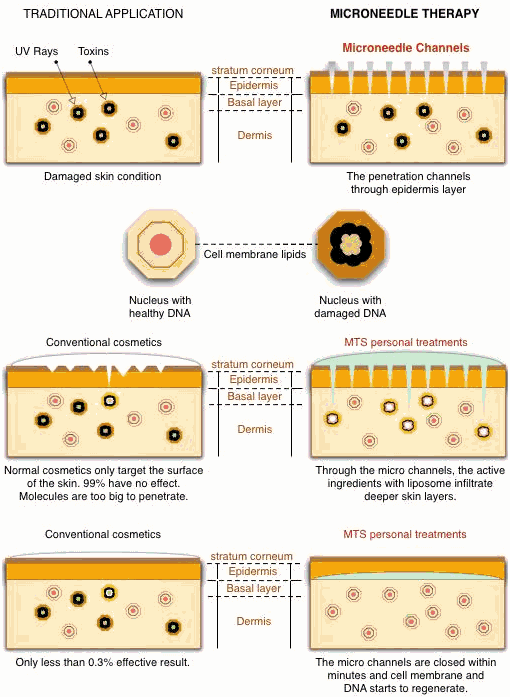How dermaneedling works
There aren't many ways to rejuvenate the skin. The best method is to cause mild skin injury. The body will immediately start repairing that injury by replacing the injured skin with new skin. That is the main principle of dermaneedling. Injuring the skin forces the body to renew it. The injury has to be just serious enough to trigger the healing processes, but not serious enough to permanently damage the skin. Microneedling is the ideal mechanism for that.
The same principle is behind most laser rejuvenation treatments, acid peels and other invasive skin rejuvenating methods. The laser either evaporates the top layer(s) of the skin entirely or it evaporates only fractions of the skin ("Fraxel laser").
A closeup of this procedure being performed:
A dermaroller creates microinjuries (tiny vertical channels in the dermis) mechanically, while fractional laser treatment makes them thermically. But the principle is the same. The resulting collagen production will slowly progress even months after the treatment.
When you sting yourself with a needle, you mechanically damage some skin cells. Those cells are too damaged to function properly and our body will immediately start removing those cells. These cells are then being replaced by new cells.
So based on this principle, dermarolling speeds up the turnover of the skin and thus speeds up the diminishing of pigmentations, post-acne spots, age spots etc.
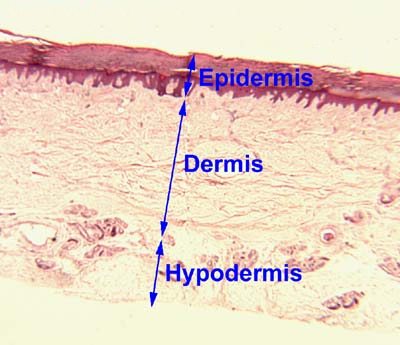 The skin's top layer is the epidermis, with a thickness of 0.05 to 0.2 mm, depending on its location. Below that lies the dermis, with a thickness of 0.5 (eyelids) to 2 mm (on the back). The soles of the feet have the thickest dermis, around 4 mm. In order to trigger collagen production, you have to reach the dermis. A 0.5 mm dermaroller reaches the top of the dermis and improves the overall skin texture and skin tone. Dermarollers shorter than 0.5 mm enhance the penetration of skin care products into the skin, improve very shallow pigmentations and thicken the epidermis.
The skin's top layer is the epidermis, with a thickness of 0.05 to 0.2 mm, depending on its location. Below that lies the dermis, with a thickness of 0.5 (eyelids) to 2 mm (on the back). The soles of the feet have the thickest dermis, around 4 mm. In order to trigger collagen production, you have to reach the dermis. A 0.5 mm dermaroller reaches the top of the dermis and improves the overall skin texture and skin tone. Dermarollers shorter than 0.5 mm enhance the penetration of skin care products into the skin, improve very shallow pigmentations and thicken the epidermis.
How dermarolling and needling in general works on stretch marks and scars:
Scar tissue, whether raised, flat or indented is usually abundant in collagen but the scar collagen is thick and typically woven in a different pattern than in the normal skin.
Scar tissue isn't really too different from normal skin, it's only the thickness and patterns of the fibers that differ.
Crushing the scar tissue will crush the scar pattern of the fibers and the body will often remodel the scar into a smoother, better looking, softer scar.
Our body does not expend effort on fixing things does not consider "broken". Scar tissue is just a cosmetic problem, it is not perceived as an issue worthy of fixing further by the body. Dermaneedling is a strategy to force the body to remodel the scar. The trick is that making tiny pricks is not sufficient damage to cause a scar but it is enough for the body to consider needled skin as "broken". Dermaneedling triggers healing processes. Unfortunately, our body usually does not bother replacing the scar tissue completely with normal skin - especially when the scar is deep - but it often replaces it with a mixture of scar- and normal tissue, producing a better looking scar.
So dermarolling triggers healing processes and the body tends to heal the area in a way - at least partially - as normal skin should look like. Indented scars fill in and raised scars flatten. It does not work in all cases, but in most people it does work.
Acne scars don't contain much scar tissue but they are atrophied (missing tissue). The scar will slowly or partially fill in with collagen triggered by a dermaroller, dermastamp or single needle. Wrinkles will also partially fill in.
In addition, needling a hypopigmented scar will facilitate the migration of melanocytes (skin-pigment producing cells) from the surrounding skin into the scar and improve its color.
The advantages of dermarolling over other methods:
Dermaneedling does not remove any skin layers. It only makes pricks into the skin. That is why the skin heals rapidly from dermarolling comparing to methods that remove skin layers. Dermaneedling is for that reason also much less prone to infection or healing complication and it has a very short downtime.
Dermaneedling can go very deep into the skin, up to 2 mm. If you went that deep with ablative methods (acid peels, ablative lasers) you could easily end up with scars or serious skin damage, because a laser physically removes part of the skin by evaporating it, and a needle only pricks the skin without actually creating a real "empty" hole where skin tissue has been removed.
Lasers or IPL use heat and heating up the skin is prone to collateral damage such as burns, hyper- or hypo-pigmentation and even scars.
Dermaneedling is cheaper than other rejuvenating/remodeling methods.
Dermaneedling thickens the skin.
Dermaneedling can be used anywhere on the body, including the areas with thin skin such as the neck or the top of the hands (except for the area of the upper eyelids and right below the lower eyelashes due to the risk of eyeball injury).
Dermaneedling highly enhances the penetration of skin care products into the skin. In order to protect us, the skin is almost impermeable. Dermarolling makes the skin temporarily very permeable for skin care products.
What is a dermaroller?
A dermaroller is a skin needling device with many small surgical needles. Dermarollers come in needle lengths between 0.13 and 3 mm. The needle diameter (thickness) is approximately 0.25 mm at their base.
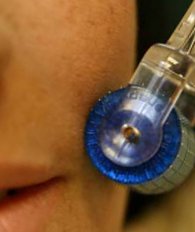
The dermarolling principle
Dermarolling remolds the skin by creating thousands of microscopic channels through the skin, increasing the formation of new tissue by activating the body's wound healing cascade (hemostasis-inflammation-proliferation-tissue remodeling). The micro-channeling causes the release of growth factors that promote scar-less healing and the deposition of normal woven collagen rather than scar collagen. The fibroblasts are responsible for collagen production. The exact mechanism how this happens is complex and not yet completely understood. New collagen and elastin forms. In one study, twenty blinded biopsies taken from 10 different patients from various parts of their body demonstrated an average increase in new fibers of 206%, in one biopsy a 1000% increase was recorded.
What microneedling can do for you and what needle length do you need?
Enhance the penetration of skin care or hair growth products: Maximum 0.3 mm needle length on the face and 0.5 mm on skin on the rest of the body. Our skin - a protective organ - is almost unpermeable. Dermarolling temporarily enables the absorption of skin care products into the skin.
Fine wrinkles: 1 to 1.5 mm needle length. This is a relatively minor procedure and can be done safely at home, provided you disinfect properly. Dermarolling is a safe alternative for people with skin too thin to have laser treatment.
Individual deep wrinkles: Glabella wrinkles (between the eyebrows) and deep forehead wrinkles: Use our single needle instrument.
Loose skin: 1.5 mm. You can improve loose skin anywhere on the body including the neck, the décolleté, the back of the hands, arms, abdomen, thighs etc. In the early stages of skin laxity, it can postpone or even replace a facelift. Sensitive areas with thin skin such as the neck need only 0.5 mm.
Sun damaged or aging skin: 1.0 to 1,5 mm.
Uneven pigmentation or acne spots: 0.5 mm to 1.0 mm (not to be used on moles!).
Scars: All scar treatment requires a dermaroller with 1.5 mm needles and benefit greatly from our single needle instrument to locally crush the scar tissue deeper and with a greater prick density. Look at some single needle results.
Stretchmarks: Become less indented, less wide and the original skin color may be partially restored.
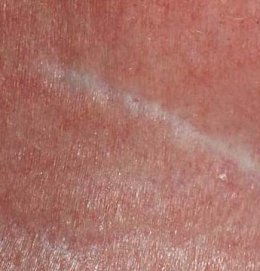
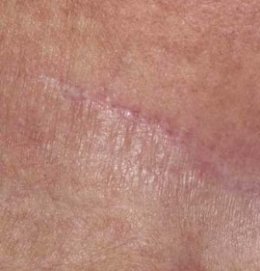
Acne scarring: Become less indented.
With deep acne scars, 1.5 mm is often not enough and 2.5 mm is required, but this is impossible to do safely at home with a dermaroller. Therefore, we supply a single needle of the right specifications (0.25 mm diameter, long taper, gamma-sterilized) to be used for home needling.
Surgical or atrophic scars: (Not keloid scars) - will soften and the original skin color may be partially restored.
Hypertrophic burn scars: Hypertrophic or burn scars (not keloids): A 1.5 or 2 mm narrow 3-liner or 1-liner. Combine it with pressure massage: Apply pressure with your fingers onto the scar for approximately 20 seconds, spot for spot. Repeat daily. Perform the pressure massage also immediately after needling or dermarolling the scar.
Dermarolling instructions
0.20 or 0.25 mm long needles:
Put the skin care product on your skin, then roll it in with the dermaroller. Alternatively, you can first roll the skin and then apply the skin care product.
0.5 mm and above:
Take a shower or wash the to-be-rolled area.
Wipe the rolling environment (table etc) with alcohol.
Wipe the skin and your hands with disinfecting alcohol. Alcohol will evapo-rate in a few minutes.
If you like, apply an ice-pack or numbing cream. Remove the numbing cream with alcohol before rolling.
When using ice-packs, clean them with alcohol before applying.
When rolling, stretch the skin by pulling it with your other hand - it will make needle penetration much easier.
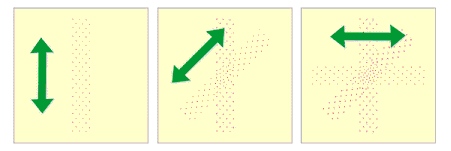
Roll in a star pattern: maximum five times horizontally, 5 times vertically, 5 times diagonally. Roll the dermaroller around five times in each direction. Back and forth equals two rolls. Lift the dermaroller slightly or change the angle of rolling and move back to the beginning. This ensures that you will not hit the same prick channel. Use medium pressure - but very light pressure around your eyes, especially with needles longer than 0.5 mm!
Try to spread the pricks evenly. You could first only roll the entire skin area horizontally, when you've covered all skin that you want to treat, you roll vertically, and finally diagonally (across). Use whatever technique you are comfortable with, as long as it spreads the number of pricks per sq. inch / cm2 more or less evenly.
Dermarolling after-care
If you roll with 0.5 mm needles or shorter, no special after care is needed.
If you roll with needles longer than 0.5 mm, the skin will turn red (like sunburn), sensitive and might get slightly swollen for several hours. Keep the area moist. For the first couple of days, the best choice is to cover the area with a very thin layer of an occlusive ointment that contains vit. A. and D. Do not expose the rolled areas to the sun for several days and thereafter, use a sunscreen lotion with a high protective factor. Wait two or three days with applying makeup as well.
The rolled area might start "peeling" after some days. Don't pick at the loose skin.
Collagen production is a very slow process and it can't be rushed. Do not expect miracles too soon. It can take up to 10 months to get substantial results.
Skin product absorption with a dermaroller
How to clean a dermaroller
Wash the dermaroller in warm water and dishwashing liquid, taking care not to damage the needles. Then soak it in disinfecting alcohol for 20 minutes. Discard the alcohol. Air- dry. Put back into container. Keep the container clean with hot water but do not use any cloth or sponge to clean it since those are full of bacteria.
How often to roll the skin?
- 0.2 or 0.25 mm long needles can be used every second day on the same skin area.
- 0.5 mm long needles can be used once or twice per week on the same skin area.
- 1 mm can be used every two weeks on the same skin area.
- 1.5 mm can only be used once every three to four weeks on the same skin area.
- 2.0 mm can only be used once every five weeks on the same skin area, and only if you have the knowledge to judge which part of the skin is thick enough to safely use this needle length.
Dermarolling in detail
Read the detailed dermarolling instructions that come with our microneedling products.
If you have questions that are not answered there or here, please search our dermarolling forum.













